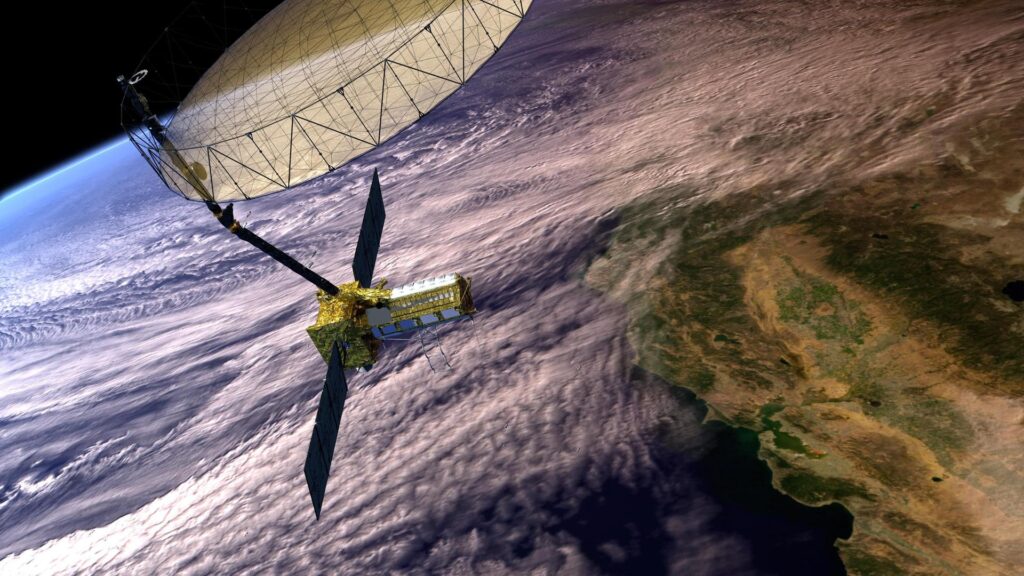
A groundbreaking collaboration between NASA and the Indian Space Research Organisation (ISRO) is set to launch an Earth-observing satellite known as NISAR. This mission aims to use synthetic aperture radar technology to monitor nearly all of the planet’s land and ice-covered surfaces twice every 12 days. The satellite is poised to provide a dynamic, three-dimensional view of Earth in unprecedented detail, detecting the movement of land and ice surfaces down to the centimeter. The launch is scheduled for no earlier than late July from ISRO’s Satish Dhawan Space Centre in Sriharikota, located on India’s southeastern coast.
NASA will host a news conference at 12 p.m. EDT on Monday, July 21, to discuss the upcoming NISAR mission. This event will be streamed live by NASA’s Jet Propulsion Laboratory in Southern California across various platforms, including X, Facebook, and YouTube. The conference will feature several key participants, including Nicky Fox, Associate Administrator of the Science Mission Directorate at NASA Headquarters, and Karen St. Germain, Director of the Earth Science Division at NASA Headquarters.
Innovative Technology and Global Impact
The NISAR mission represents a first-of-its-kind collaboration between NASA and ISRO, combining advanced radar technology to address critical environmental challenges. The satellite’s synthetic aperture radar system is designed to provide high-resolution data that can aid in disaster management, agricultural monitoring, and climate change research.
“NISAR’s ability to detect changes in Earth’s surface down to the centimeter will revolutionize our understanding of natural phenomena and human impact on the environment,” said Paul Rosen, Project Scientist for NISAR at NASA’s Jet Propulsion Laboratory.
This development follows a series of successful collaborations between NASA and ISRO, highlighting the growing importance of international partnerships in space exploration and Earth observation. The mission aims to enhance the capacity of scientists and policymakers to respond to natural disasters and manage resources effectively.
Historical Context and Previous Collaborations
NASA and ISRO have a long history of collaboration, dating back to the launch of the Indian National Satellite System (INSAT) in the 1980s. More recently, the two agencies have worked together on the Mars Orbiter Mission and the Chandrayaan-1 lunar mission. These joint efforts have paved the way for more ambitious projects, such as NISAR, which leverage the strengths of both organizations.
The announcement comes as space agencies worldwide increasingly recognize the value of international cooperation in tackling global challenges. By combining resources and expertise, NASA and ISRO aim to achieve scientific breakthroughs that would be difficult to accomplish independently.
Looking Ahead: Implications and Future Prospects
The NISAR mission is expected to have far-reaching implications for Earth science and environmental monitoring. By providing detailed data on land and ice movements, the satellite will enhance our understanding of climate change, deforestation, and urbanization.
According to experts, the data collected by NISAR could also play a crucial role in improving agricultural productivity and managing water resources. As the global population continues to grow, the need for sustainable resource management becomes increasingly urgent.
“The insights gained from NISAR will be invaluable for developing strategies to mitigate the impacts of climate change and ensure food security for future generations,” noted Wendy Edelstein, Deputy Project Manager for NISAR at NASA JPL.
Meanwhile, the successful launch and operation of NISAR could pave the way for future collaborations between NASA and ISRO, as well as other international partners. As space exploration and Earth observation become more interconnected, the potential for joint missions and shared discoveries continues to expand.
As the countdown to launch begins, the world eagerly anticipates the insights and advancements that NISAR will bring. This mission not only represents a significant technological achievement but also underscores the power of collaboration in addressing some of the most pressing challenges facing our planet today.







